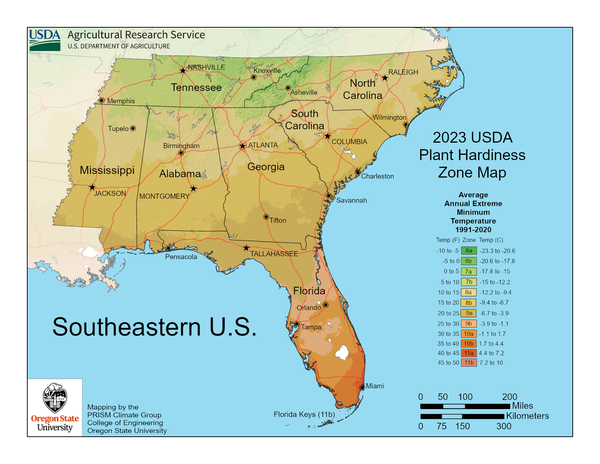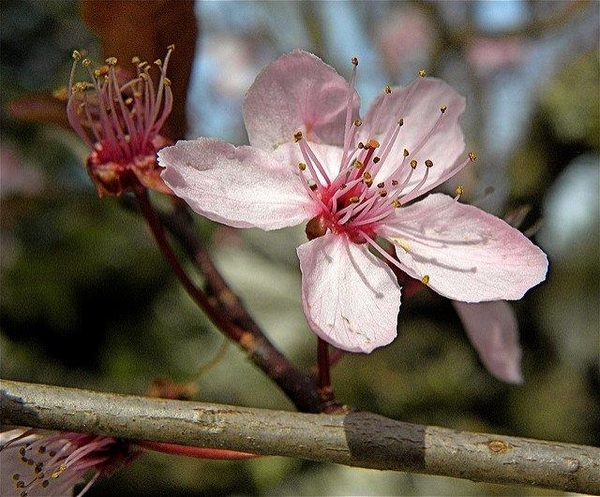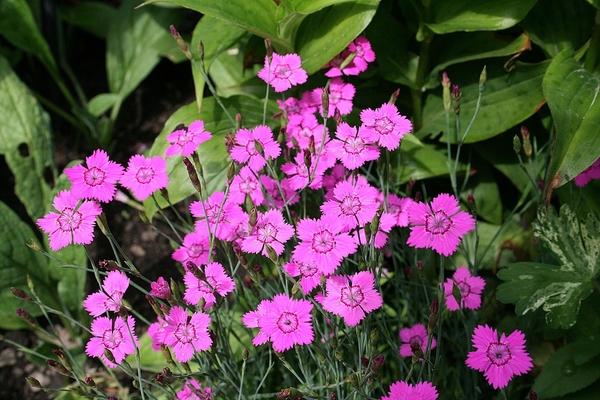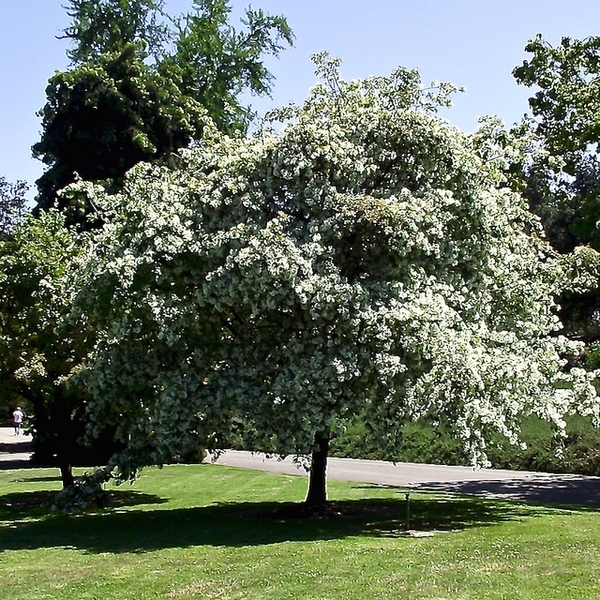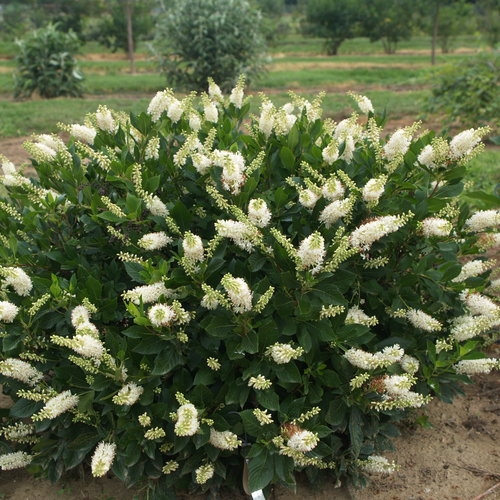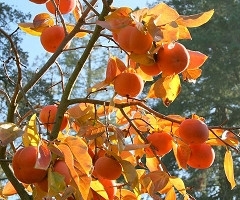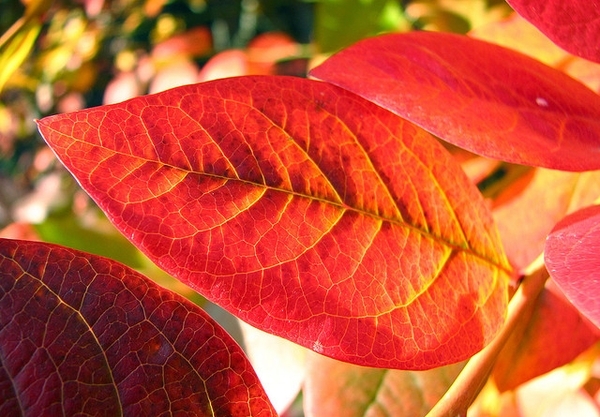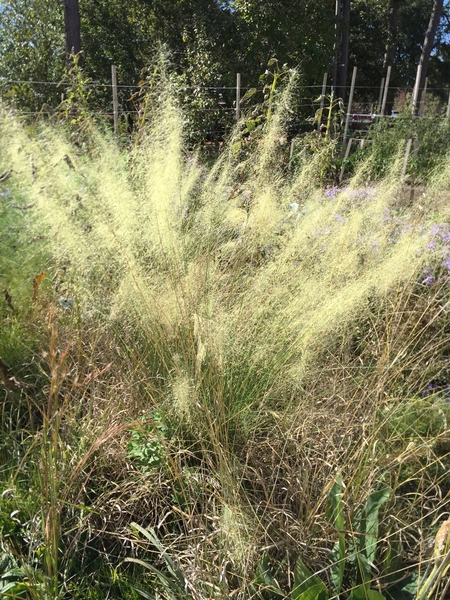Introduction
Despite the popularity and necessity of landscaping, it can be quite daunting thinking through how to select plants for a chosen site. The purpose of this factsheet is to provide both consumers and landscapers with a few hints to select landscape plants that will best fit their current project. Several takeaways include understanding the importance of the environment and location of the planting area, mature size of the plant and its characteristics, as well as how layering can increase seasonal interest and diversity of the landscape. These tips will ensure that gardeners are better equipped to make the best selection for their landscapes.
Environment and Location
When selecting plants for the landscape, consider the environment and surroundings of where the plant will be growing. This is easier said than done as many resources mention only USDA Plant Hardiness Zones and light requirements. However, these are only a few pieces of the puzzle.
-
First - Be sure plants chosen for the geographic region of the state are hardy in winter and can withstand the summer. For example, in the updated USDA Plant Hardiness Zone Map, Raleigh has changed from Hardiness Zone 7b to 8a, indicating warmer average low temperatures compared to 20 years ago. The USDA map does not take into account that average summer temperatures have increased and warmer days might begin earlier in the year or last longer into the fall. Additionally, Raleigh receives more rainfall quantity and intensity than it did 20 years ago. The native plant, mountain ash (Sorbus americana), for example, looks splendid on the Blue Ridge Parkway in late fall with bright red berries against crisp blue skies. It is hardy in Raleigh winters, however, the plant will not tolerate summer temperatures below an elevation of 4,000 ASL. Salt levels are another factor that can affect a plant's ability to survive. The ‘Fuyu’ persimmon (Diospyros kaki 'Fuyu’), for example, is not able to withstand the salty soil near the beach nor the salt spray that travels quite far inland.
-
Second - Drainage and soil structure are a significant factor to consider when planting in urban areas as soil found in new neighborhoods, or recently constructed areas around streets and parking lots, will likely have disturbed, compacted soil, poor drainage, or both. A great way to alter the drainage on newly disturbed sites is to mound planting areas and amend the native soil with either composted organic matter or inorganic amendments that improve drainage in that bed. Take a soil sample of the planting area prior to planting to determine if nutrients may need to be applied to improve fertility or adjust pH. While wetland plants may adapt to a drier site to some degree, when coupled with higher average temperatures, they may perform better when supplemental water is added during drought. For example, Virginia sweetspire (Itea virginica), bald cypress (Taxodium distichum), and button bush (Cephalanthus occidentalis) all thrive along the edge of lakes and ponds, but will also grow in dryer, well-drained soils.
-
Third - The intensity and duration of sunlight in combination with temperature are critical factors to consider. Direct sun in the morning may be accompanied by lower temperatures, as compared to a site with all afternoon sun. This is made worse if plants are near parking lots, concrete walkways, or brick foundations because these structures both reflect light into foliage and absorb heat to reradiate it around plants, thus potentially increasing heat stress throughout the day. The duration of heat stress exposure, whether it is accompanied by high light or not, is a deciding factor for some plant’s ability to survive, like Hosta sp. or dwarf Alberta spruce (Picea glauca ‘Conica’).
Mature Plant Size and Growth Rate
When deciding if a plant would be a good choice for the landscape, consider its size at ⅔ maturity for trees and full mature size for shrubs, then space plantings according to those metrics. It’s enticing to have the immediate effect of a mature landscape, however, plants planted too close to a house or too close together will need increased pruning, provide a potential pathway for insects and rodents into the house, and may stimulate mold growth. It is also worthwhile to consider a plants growth rate. Using smaller sized trees and shrubs at planting, reduces establishment time and allows plants to grow into the allotted space.
Plants that grow quickly can often be planted from smaller sizes, whereas slower growing plants (e.g., Japanese maples) might benefit from planting larger sizes at the onset. If there isn’t time to wait, and larger sizes of slower growing plants are desired, consider using a 7 or 15 gallon size container. Regardless, it is imperative to plan for the growth of all plants over time. It is also important to note that plants labeled as “dwarf” cultivars do not necessarily grow to be small plants at maturity, just that they grow more slowly than the true species.
Plant Diversity and Seasonal Interest
Most home landscapes include a simple, single row of evergreen foundation plants across the front of the house to provide year round color. This is shown in the first row of the table below. While this serves the need for visually softening where the foundation connects to the ground, it may be more useful in terms of aesthetic interest and environmental soundness to layer plants. Creating a table like the one below aids a homeowner in seeing where there might be a potential gap in seasonal interest. Then, when selecting new plants for a landscape, the gaps can be targeted. Additionally, plant diversity provides animals and insects habitat and reduces turf grass monoculture and the maintenance it requires. If the existing foundation plants are evergreen (and thriving), consider leaving them in place, and simply extending the bed outwards. Consider layering plants to increase coverage, provide year round interest, and provide food, cover and nesting areas for wildlife.
| Spring | Summer | Fall | Winter | |
|---|---|---|---|---|
| Evergreen Shrubs | X | X | X | X |
| Deciduous Shrubs | X | X | X | |
| Perennials | X | X | X | |
| Ornamental Grases | X | X | X |
What constitutes seasonal interest? Incorporating different plant types that grow at different heights, bloom, or fruit throughout the year. It could also include providing interesting fall color, or having an attractive trait that can be combined with other plants to create a more aesthetically pleasing landscape. For example, traits could include the peeling bark and smaller size of oakleaf hydrangea (Hydrangea quercifolia ‘Pee Wee’), the long arching stems and interesting seed pods of native deciduous azaleas (Rhododendron sp.), colorful new growth of 'Merlot' redbud (cercis canadensis ‘Merlot’), or succulent, light blue foliage of some sedum. A good example of layering would start with an evergreen like 'Raulston Hardy' viburnum (Viburnum obovatum 'Raulston Hardy') which is 3-5’ tall and has white flowers in spring, followed by black fruit. While the fruit is not showy, it is an excellent food source for birds. Next, add a deciduous plant that grows 2-4’ tall and may provide a summertime pop of color like bigleaf hydrangea (Hydrangea macrophylla 'Bloomstruck') or another cultivar. Lastly, adding a dianthus or another low growing perennial will provide evergreen foliage (often of a blue-green cast) and spring flowers. This combination works well together because the rounded pompoms of both viburnum and hydrangea are a repeated element, while the dianthus has a different flower shape.
Flower colors can be repeated or contrasted (common strategies utilized in planting composition) depending on specific plant species chosen. Therefore, overlapping themes emerge, for example, similar inflorescence shapes, individual flower structures, and flower color, as well as contrasting plant size and foliage shape and texture. Combining all these elements strengthens garden coherency and creates lasting pockets of landscape allure. Adding another layer of deciduous/semi-deciduous or herbaceous plants will increase the biodiversity further. Mixing in herbaceous plants like gayfeather (Liatris sp.) or bearded tongue (Penstemon sp.) will attract butterflies, hummingbirds, and other pollinators. Choosing plants that have a tight branching structure that creates a dense canopy architecture, like 'emerald green' arborvitae (Thuja occidentalis), will provide birds and other wildlife a place to hide and nest.
Layered Planting Options
Below is a selection of trees, shrubs, perennials, and grasses used to create three combinations that satisfy some of the criteria outlined above for three different times of the year. These plants were selected so that each set represents a cohesive set of colors, textures, and seasonal interest when planted together in the landscape.
Spring
- Tree- purple leaf plum (Prunus cerasifera ‘Krauter Vesuvius’)
-
Light pink flowers in Spring, purple foliage Spring-Fall
-
Possibly short lived due to being in the rose family (Rosaceae)
-
- Shrub- 'Little Henry' summersweet (Itea virginica 'Sprich' LITTLE HENRY)
-
Arching white flower panicles in Spring
-
Prefers moist soil and can form a thicket if left unchecked over time
-
Glossy green foliage in Summer turns bright red in Fall
-
- Perennial- cheddar pinks (Dianthus 'Feuerhexe' Firewitch)
-
Blooms pink in Spring
-
Evergreen, fine-textured, blue-gray foliage
-
The purple leaf plum was chosen for its early pink showy flowers that give way to deep purple leaves, which contrasts the white weeping flowers of ‘Little Henry’ summersweet. The low growing dianthus will provide a showy display of pink flowers at ground level with a blue green foliage that creates an eye-catching appearance. The Itea will also provide fall interest as the foliage turns red.
Summer
-
Tree- Chinese fringe tree (Chionanthus retusus)
-
Tan and gold exfoliating bark (15’ T x 6’ W)
-
Clusters of fluffy white flowers on or after Mother’s Day
-
Blue drupes in Summer (attracts birds)
-
Bright yellow Fall color
-
-
Shrub- summersweet (Clethra alnifolia Sugartina® 'Crystalina')
-
Dwarf summersweet with fragrant white flowers mid-Summer that attracts butterflies
-
Dark glossy green foliage turns yellow in Fall
-
Tight compact cultivar that requires little pruning - good for small landscapes
-
-
Perennial- gayfeather (Liatris spicata ‘Kobold')
-
Purple flowers in Summer with contrasting thin foliage compared to summersweet
-
The bright purple flowers and thin wispy leaves of 'Kobold' will contrast the texture and color of the Clethra’s white flowers and small green leaves. The flowers provide repetition in form. The Clethra will also provide great Fall interest with its vibrant yellow foliage.
Fall
-
Tree- Asian persimmon (Diospyros kaki 'Fuyu')
-
Orange fruits larger than native species, less astringent than other persimmon
-
Orange-red foliage in late Fall
-
Smaller mature size (20-30') than the native species (40-60’); great for small landscapes
-
-
Shrub- highbush blueberry (Vaccinium 'Sunshine Blue')
-
Summer fruit; red Fall foliage
-
-
Perennial- white cloud muhly grass (Muhlenbergia capillaris ‘White Cloud')
-
White plumes in the Fall - great choice when surrounded by orange and red Fall foliage plants
-
The persimmon is a great plant that provides a beautiful orange color from the fruit and leaves. Both the persimmon and blueberry were chosen to add an edible dynamic to the landscape while still providing a fall interest. The white muhly grass plumes and thin foliage are a great contrast to the red larger leaves from the blueberry bush.
Conclusion
This factsheet assists landscapers and gardeners in selecting plant material based on several factors. Choose hardy plants that also survive summer heat stress and space them according to their mature size. Try to combine interesting traits beyond flower time to increase seasonal interest in the garden. Promote plant diversity in the landscape.
Publication date: Dec. 18, 2023
N.C. Cooperative Extension prohibits discrimination and harassment regardless of age, color, disability, family and marital status, gender identity, national origin, political beliefs, race, religion, sex (including pregnancy), sexual orientation and veteran status.

